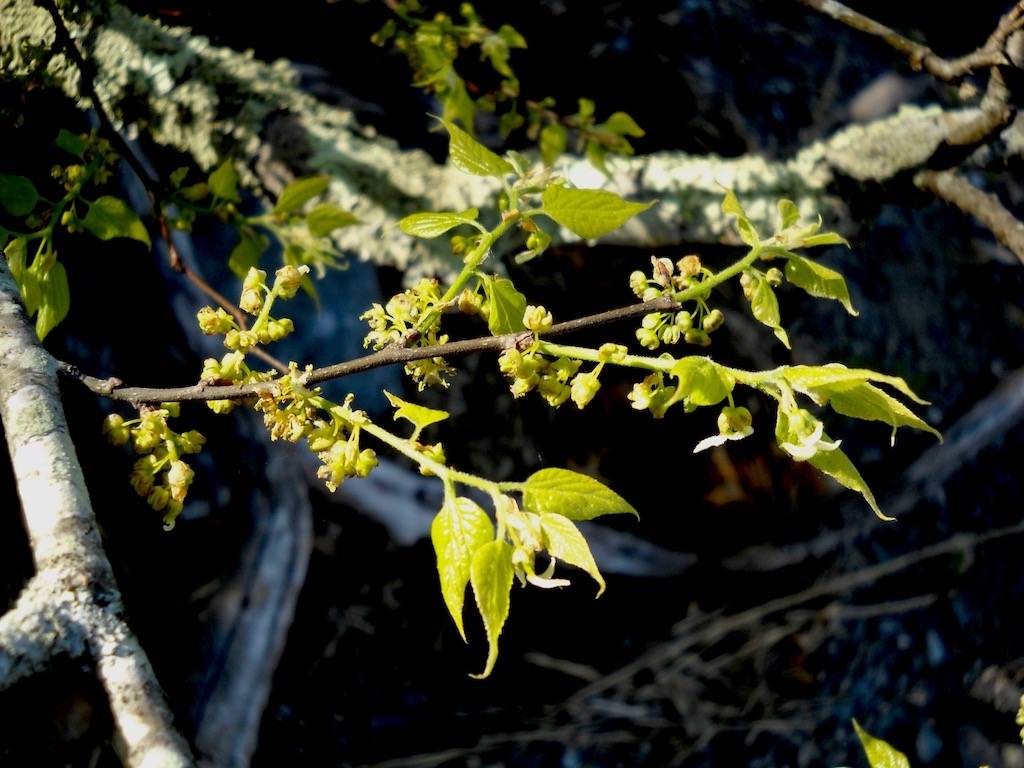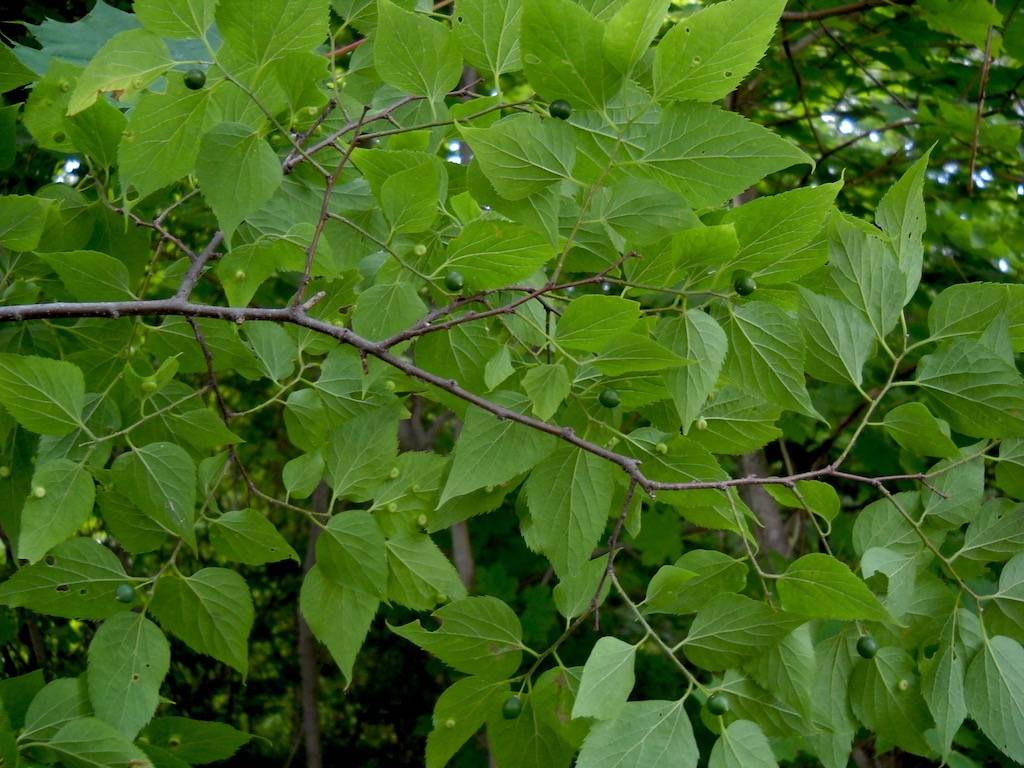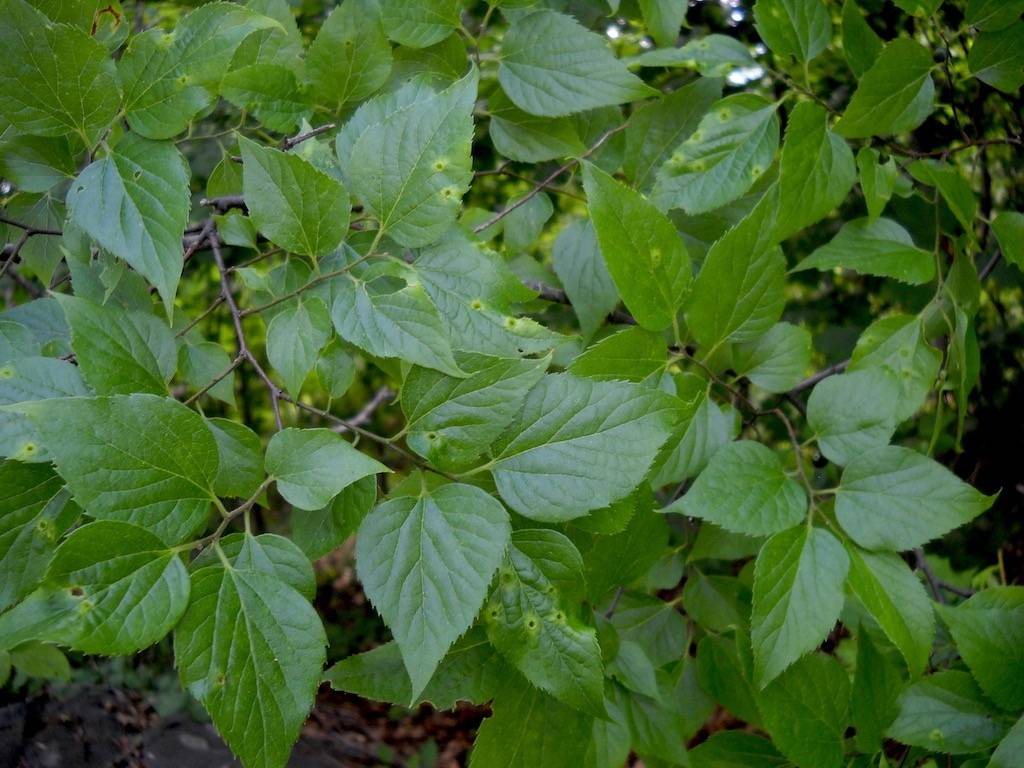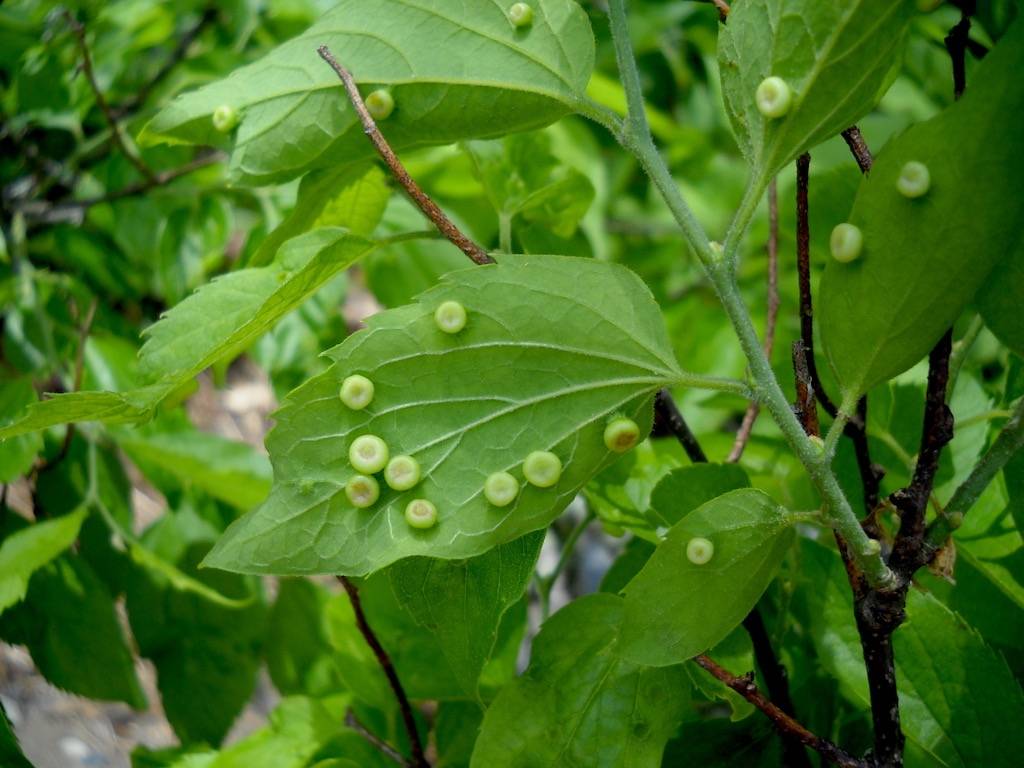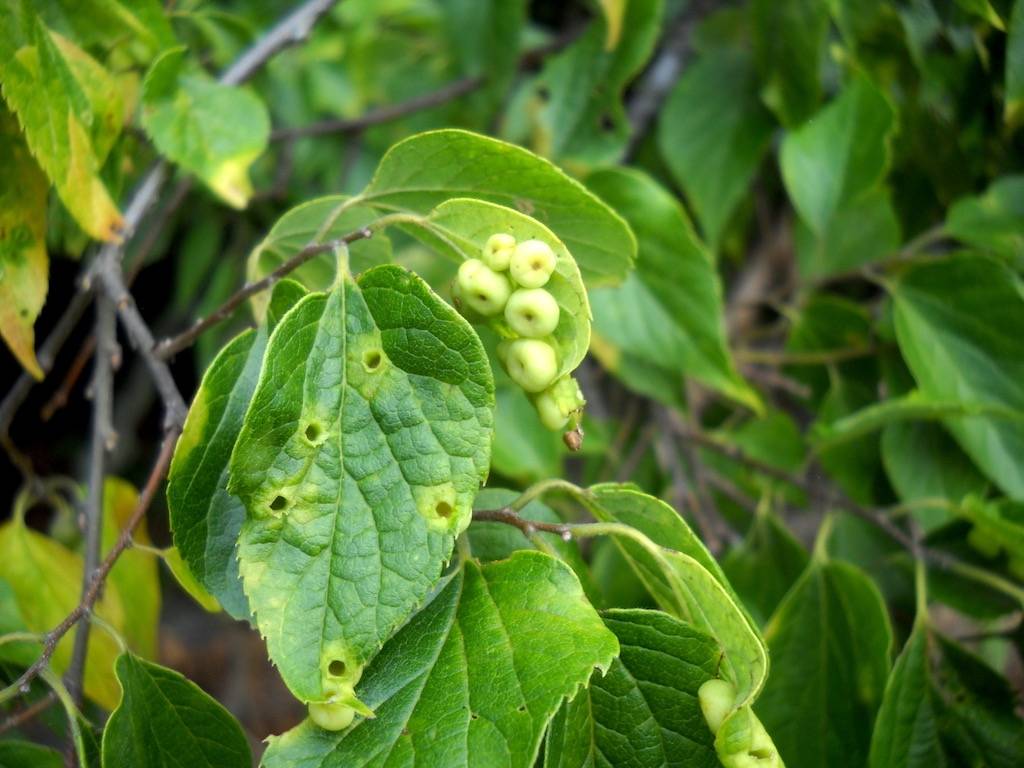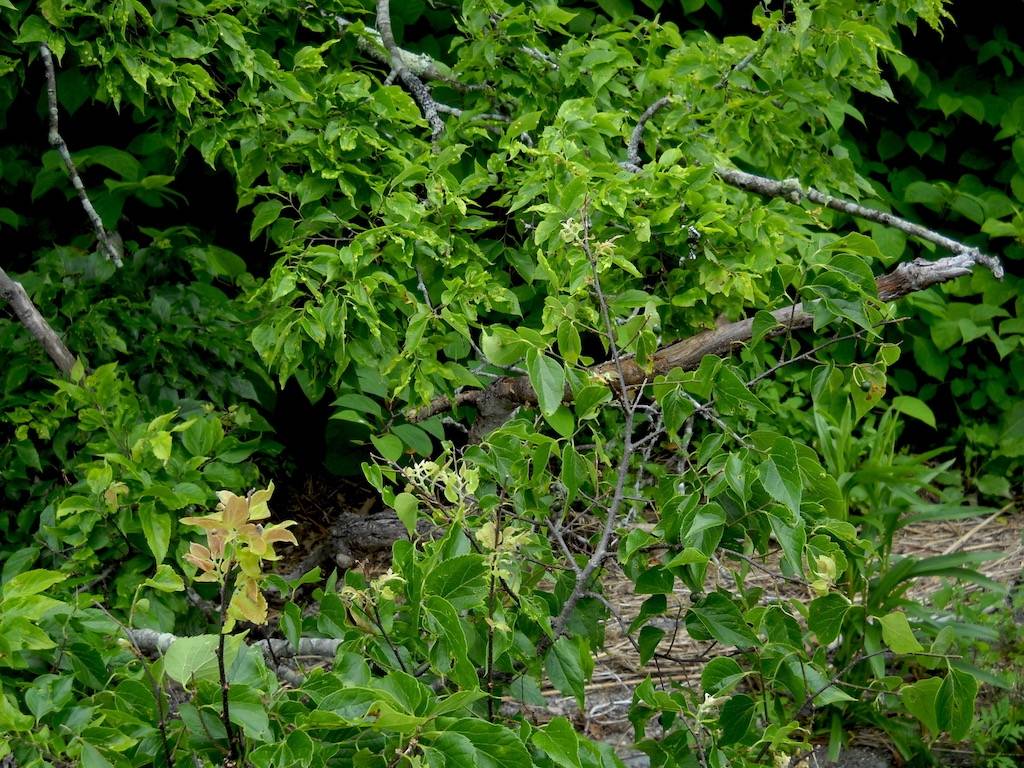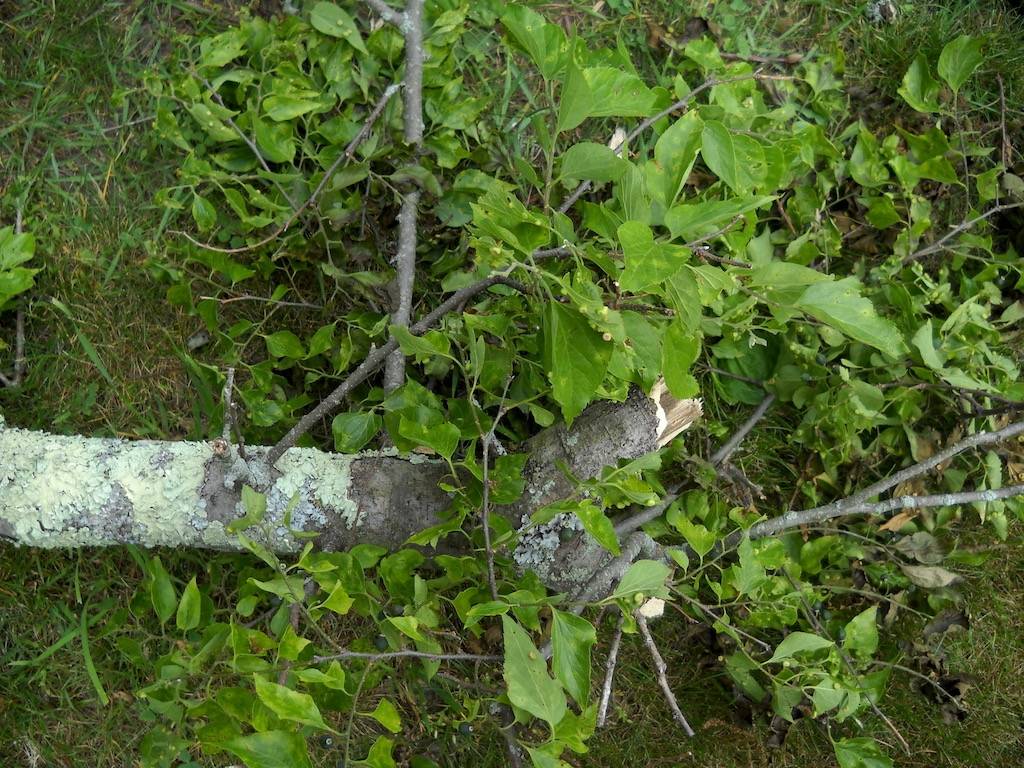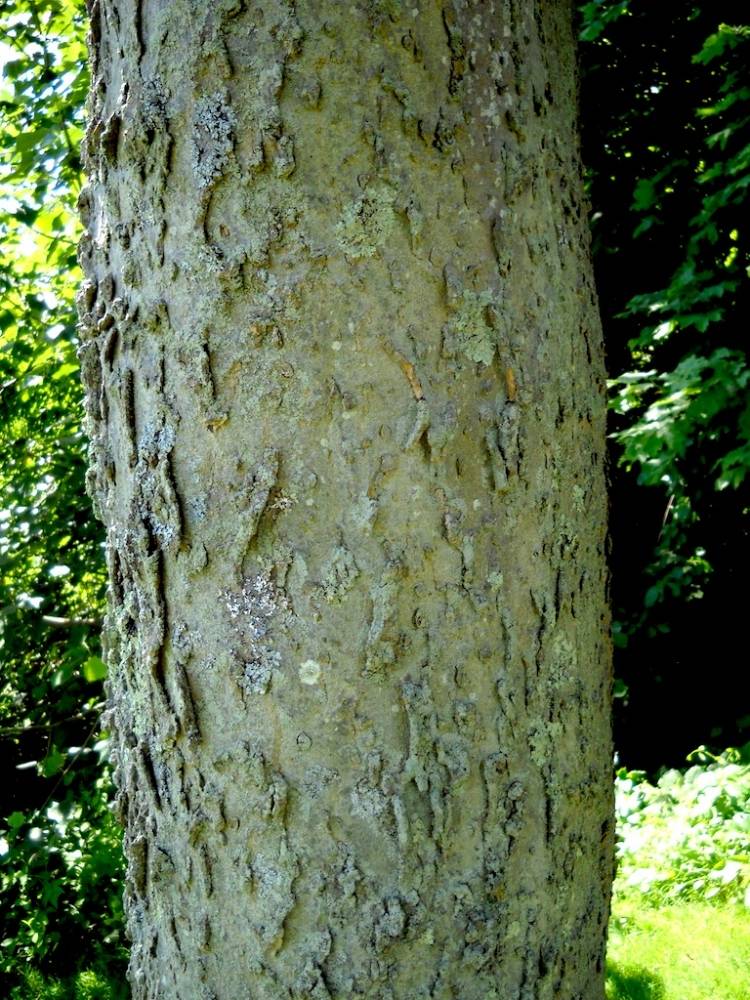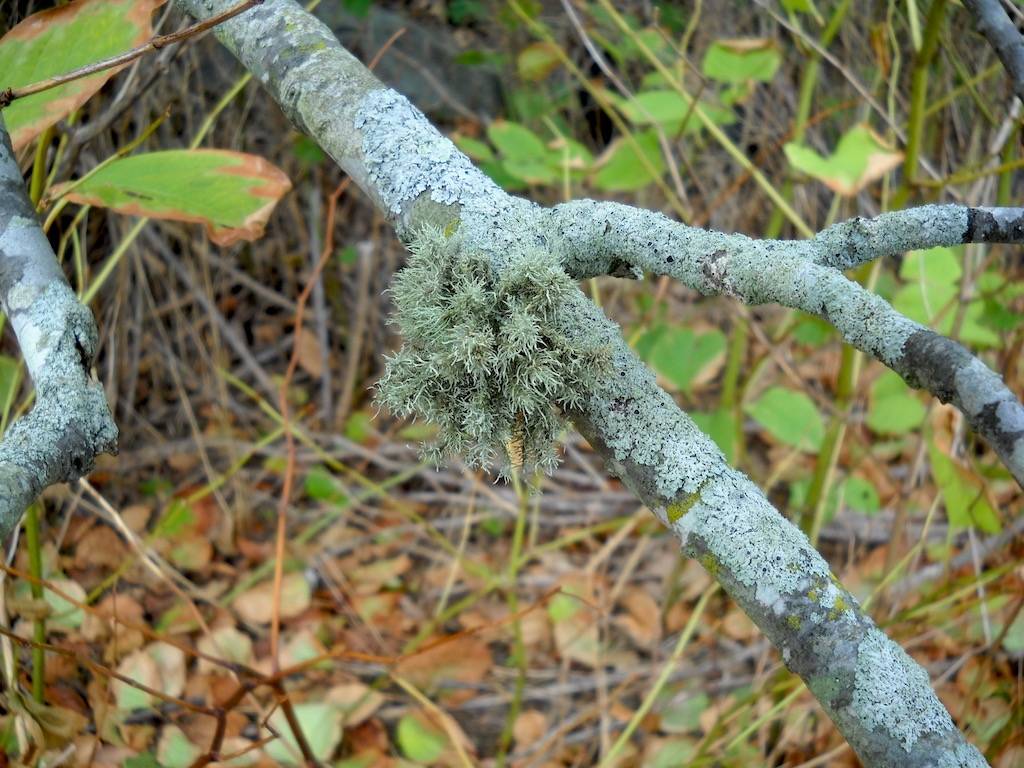common hackberry
There are two rather large common hackberry trees not far from the parking lot at Salter Grove and both are recognizable by the warty bark even at a distance. Smaller individuals grow in the upland woods, along the marsh trail, and even among a grove of conifers in the middle of Audubon Field. They are likely to be the offspring of the two large individuals since many birds and small mammals feed on the small fruits of this species.
The common hackberry leaf is distinctive because of its characteristically asymmetrical leaf base. The leaves are late to emerge compared to the other tree species at Salter Grove. Even before leaves are fully expanded, they are infested by gall-forming insects that stimulate abnormal tissue growth to form a shelter to protect the development of their eggs. However, these life-preserver shaped galls do not appear to harm the leaves or the overall health of the tree.
For more information:
https://gobotany.nativeplanttrust.org/species/celtis/occidentalis/
http://dendro.cnre.vt.edu/dendrology/syllabus/factsheet.cfm?ID=26
http://www.illinoiswildflowers.info/trees/plants/hackberry.html
https://sciencetrends.com/what-is-a-hackberry-tree
https://the-natural-web.org/tag/hackberry/
https://agrilife.org/extensionento/insects/hackberry-gall-makers/

